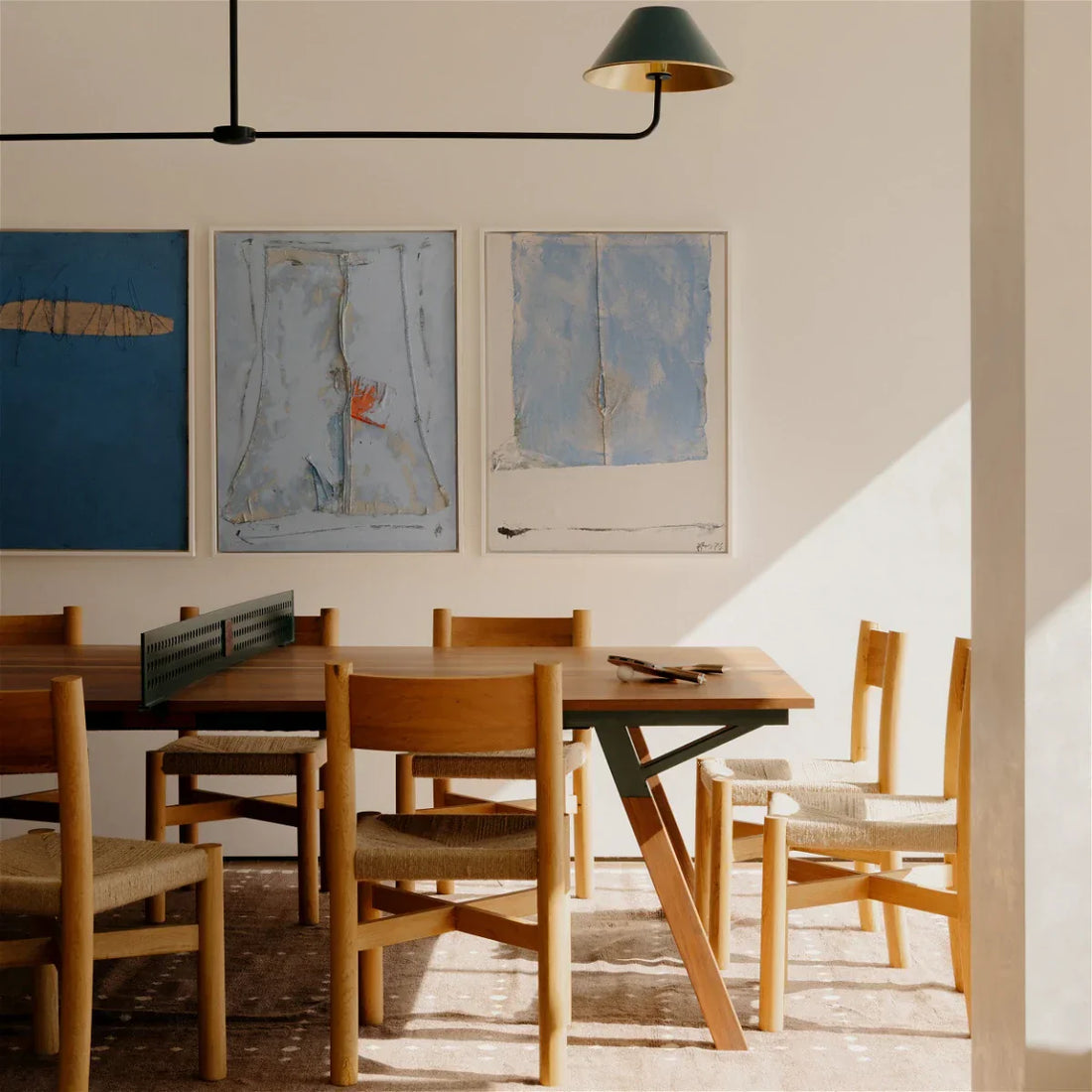
Enhancing Your Dining Room: A Comprehensive Guide to Art Selection
Beyond serving as a place to enjoy meals, your dining room is a canvas for self-expression and a venue for creating cherished memories. Among the many ways to infuse character and style into this space, selecting the right art stands out as a powerful choice. This comprehensive guide will delve into the art of choosing art for your dining room. We'll cover key considerations like size, style, placement, and framing to help you transform your dining area into a captivating visual masterpiece.
1. Dining Room Art Size: Begin your art selection journey by determining the right size for your dining room. A common pitfall is opting for artwork that feels either too diminutive or overwhelmingly large for the space.
To achieve balance, take cues from your dining table's dimensions. A general guideline is that the width of your chosen artwork should occupy approximately 75% to 80% of your table's width. This harmonizes the relationship between your table and the art, ensuring a cohesive look. However, don't shy away from slightly larger pieces for a striking and impactful centerpiece, especially in rooms with lofty ceilings.
For more expansive wall spaces, contemplate a gallery wall featuring multiple smaller artworks thoughtfully arranged. This approach adds visual intrigue and offers flexibility in terms of arrangement.
2. Dining Room Art Style: Your art's style should harmonize with your dining room's overall decor and ambiance, reflecting the chosen design aesthetic, be it traditional, contemporary, rustic, or eclectic.
In a traditional dining room, consider timeless pieces like oil paintings, landscapes, or still life art. For contemporary settings, venture into abstract or modern art to create a captivating visual contrast. Rustic dining rooms benefit from art that mirrors rustic or folk aesthetics, incorporating natural elements and earthy tones.
3. Dining Room Art Placement: Determining the ideal placement for your art is crucial for maximizing its impact. Traditionally, dining room art is hung at eye level when seated, ensuring that diners can appreciate the artwork without straining their necks or vision.
For a single statement piece, the center of the artwork should align with the average eye level of seated diners. For gallery walls or multiple pieces, ensure that the arrangement flows smoothly and maintains a cohesive visual narrative.
Consider the distance from the artwork to the dining table as well. A good rule of thumb is to leave about 8 to 10 inches of space between the bottom of the artwork and the top of the dining table. This separation helps create a sense of balance and prevents the art from overwhelming the table.
4. Dining Room Art Framing: Art framing plays a pivotal role in the overall presentation and protection of your chosen pieces. The frame should complement both the artwork and the dining room's decor.
In a formal dining room with a classic design, ornate and gilded frames can enhance the elegance of traditional artworks. For contemporary spaces, minimalist and sleek frames in materials like metal or simple wood can provide a modern touch. Rustic dining rooms can benefit from frames that incorporate natural elements like distressed wood or reclaimed materials.
When selecting frames, opt for materials and finishes that harmonize with your dining room's color palette and style. The frame should serve as a subtle extension of the artwork, drawing attention without overpowering it.
5. Dining Room Art Lighting: Lighting plays a pivotal role in highlighting your dining room art. Proper illumination ensures that the artwork remains a focal point during both daytime and nighttime dining experiences.
Consider using adjustable lighting fixtures like track lighting or wall sconces to direct light onto the art. These fixtures allow you to control the intensity and angle of light, enhancing the artwork's visual impact.
If possible, install dimmer switches for your dining room lighting. This allows you to adjust the brightness to create various atmospheres, perfect for different occasions or moods.
Conclusion: Selecting art for your dining room is a creative endeavor that should reflect your personal style and enhance the room's ambiance. By carefully considering factors like size, style, placement, framing, and lighting, you can curate a dining space that not only nourishes your body but also delights your senses and enriches your dining experiences. Whether you choose a single, striking piece or a curated gallery, your dining room's art can become a conversation starter, a source of inspiration, and a reflection of your unique taste and personality.
